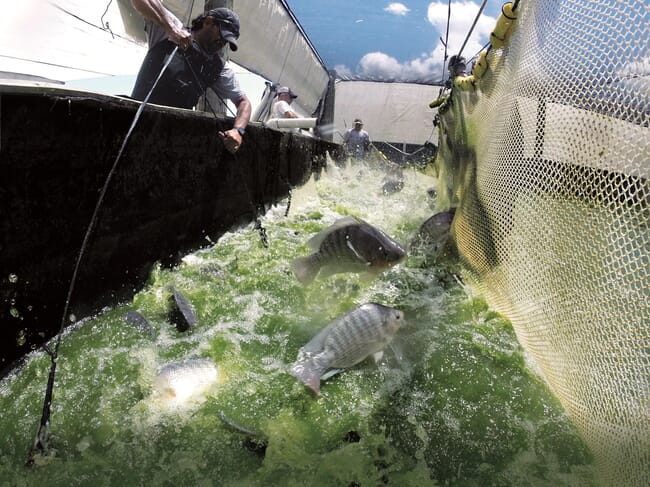
Scientists found that the final cumulative percentage mortality of offspring from resistant parents was only 1 percent.
Recent research demonstrates a significant quantitative trait locus (QTL) affecting resistance to Streptococcus iniae in Benchmark Genetics’ strain of Nile tilapia. This discovery is the result of collaboration between the USDA's Aquatic Animal Health Research Unit (AAHRU) and Benchmark’s geneticist Sergio Vela-Avitúa.
The QTL found by the team explained up to 26 percent of the genetic variation in resistance. Fish were then selectively bred for survival to S. inae using marker-assisted selection (MAS) to demonstrate resistance in fish classified as “resistant” or “susceptible”.
As Vela-Avitúa commented on the findings: “The results were impressive, with a final cumulative percent mortality of only 1 percent for offspring from resistant parents, compared to 73 percent for offspring from susceptible parents. These results demonstrate that MAS for improved resistance to S. iniae is feasible and likely to be highly effective”.
Benchmark Genetics has already implemented these results into their breeding and production of genetically improved Spring Tilapia breeders and fingerlings.
Morten Rye, director of genetics at Benchmark Genetics, commented: "We are thrilled to announce this breakthrough in the development of more disease-resistant tilapia strains."
"Our proprietary Spring Tilapia strain is the result of years of pioneering research and innovation, and we are committed to using our expertise to improve the sustainability and profitability of the global tilapia industry. We are confident that this new development will provide significant benefits to our customers and to the industry as a whole" Rye concluded.
Benchmark is committed to continuous research and innovation on selective breeding programs and genomic tools to support sustainable industry growth.



